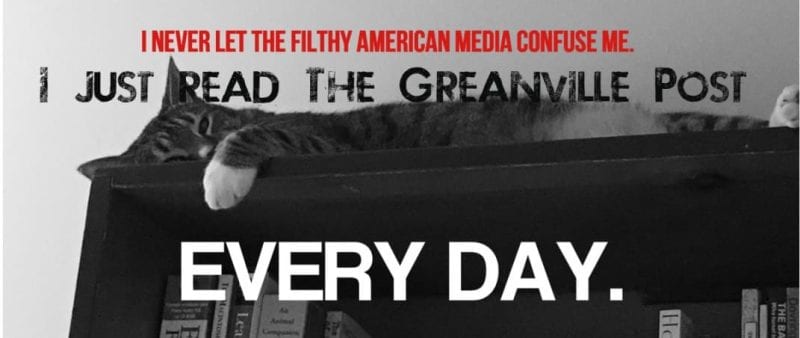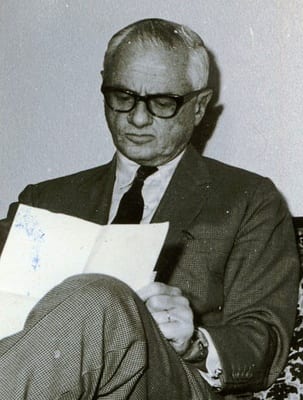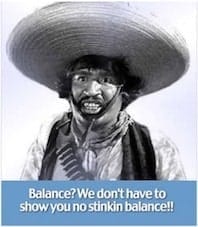Mendacious History: The New York Times, the Imperial Jewel of Smooth Lies
All The News Fit To Print (Part I): Structure and Background of the New York Times
By Edward S. Herman
Z magazine, April 1998
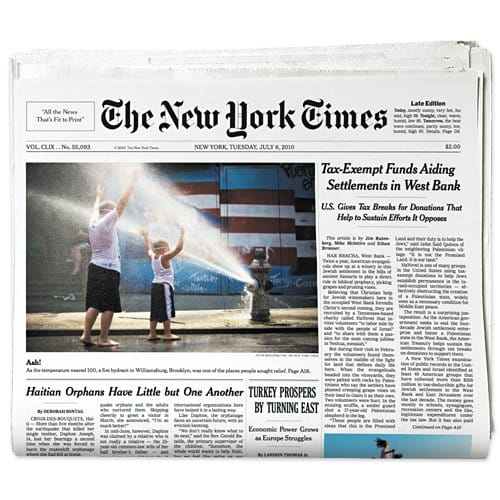
All The News Fit To Print, Part II
by Edward S. Herman
Z magazine, May 1998
All The News Fit To Print (Part III): The Vietnam War and the myth of a liberal media
By Edward S. Herman
Z magazine, October 1998
|
[dropcap]I[/dropcap]t is part of conservative mythology that the mainstream media, especially the New York Times, opposed U.S. involvement in Vietnam, and, effectively “lost the war.” Liberals, on the other hand, while often agreeing that the press opposed the war, regard this as a display of the media at its best, pursuing its proper critical role. But they are both wrong: conservatives, because they identify any reporting of unhelpful facts as “adversarial” and want the media to serve as crude propaganda agencies of the state; liberals, because they fail to see how massively the mainstream media serve the state by accepting the assumptions and frameworks of state policy, transmitting vast amounts of state propaganda, and confining criticism to matters of tactics while excluding criticism of premises and intentions. Vietnam War Context [dropcap]T[/dropcap]he U.S. became involved in Vietnam after World War II, first in supporting the French from 1945 to 1954 as they tried to reestablish control over their former colony following the Japanese occupation. After the Vietnamese defeated the French, the U.S. refused to accept the 1954 Geneva settlement, which provided for a temporary North-South division to be ended by a unifying election in 1956. Instead, it imported its own leader, Ngo Dinh Diem, from the U.S., imposed him on the South, and supported his refusal to participate in the 1956 election. Eisenhower conceded that Ho Chi Minh would have swept a free election, and from 1954-1965 a stream of U.S. experts conceded that our side had no indigenous base, whereas the Vietnamese enemy had the only “truly mass-based political party in South Vietnam” (Douglas Pike). Pacification officer John Vann stated in 1965 that “A popular political base for the Government of South Vietnam does not now exist,” that our puppet regime is “a continuation of the French colonial system…with upper class Vietnamese replacing the French,” and that rural dissatisfaction “is expressed largely through alliance with the NLF [National Liberation Front].” When our puppet could no longer maintain control by the early 1960s, even with massive U.S. aid, the U.S. engaged increasingly in direct military action from 1962, including the chemical destruction of crops and mass relocation of the population. In 1963 it collaborated in the assassination of Diem, replacing him with a series of military men who would do our bidding, which meant, first and foremost, refusing a negotiated settlement and fighting to the bitter end. As U.S. official William Bundy put it, “Our requirements were really very simple: we wanted any government that would continue to fight.” The U.S. was determined to maintain a controlled entity in the South, and a negotiated settlement with the dominant political force there -which opposed our rule- was consequently dismissed. The strategy was to escalate the violence until the dominant indigenous opposition surrendered and agreed to allow our choice to prevail. We made sure that only force would determine the outcome by manipulating the governments of “South Vietnam” so that only hard-line military men would be in charge. General Maxwell Taylor was frank about the need for “establishing some reasonably satisfactory government,” replacing it if it proved recalcitrant, possibly with a “military dictatorship.” Having imposed a puppet, refused to allow the unifying election, evaded a local settlement that would give the majority representation, and resorted to extreme violence to compel the Vietnamese to accept our preferred rulers, a reasonable use of words tells us that the U.S. was engaging in aggression in Vietnam. 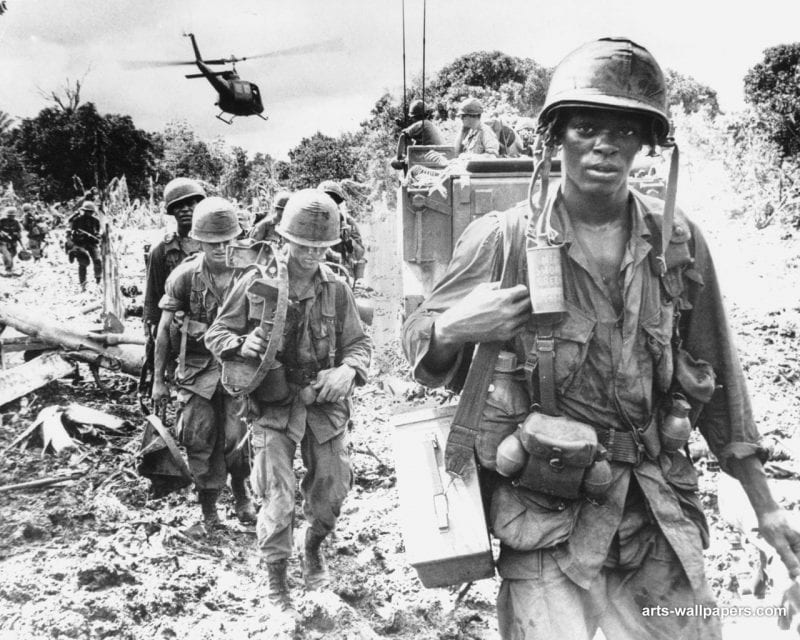 Thoroughly indoctrinated with racist hatred, many GIs committed dreadful crimes in Vietnam. As usual, most of them didn’t have a clue about the true war aims or their mission. The official U.S. position, however, was that the North Vietnamese were aggressing by supporting the southern resistance, and, in April 1965, actually sending organized North Vietnamese troops across the border. In one remarkable version, the southerners who were members of the only mass-based political party in the south, but opposed to our choice of ruler, were engaged in “internal aggression.” We were allegedly “invited in” by the government to defend “South Vietnam.” The mainstream U. S. media never accepted the view that the Soviets were justifiably in Afghanistan because they were “invited in”-they questioned the legitimacy of the government doing the inviting. If the Soviet-sponsored government was a minority government, the media were prepared to label the Soviet intrusion aggression. Their willingness to apply the same principles to the Vietnam war was a test of their integrity and they -and the New York Times- failed that test decisively. In his “Without Fear Or Favor”, Harrison Salisbury acknowledged that in 1962 the Times was “deeply and consistently” supportive of the war policy. He also admitted that the paper was taken in by the Johnson administration’s lies on the 1964 Bay of Tonkin incident that impelled Congress to give Johnson a blank check to make war. Salisbury claims, however, that in 1965 the Times began to question the war and moved into an increasingly oppositional stance, culminating in the publication of the Pentagon Papers in 1971. While there is some truth in Salisbury’s portrayal, it is misleading in important respects. For one thing, from 1954 to the present, the Times never abandoned the framework and language of apologetics, according to which the U.S. was resisting somebody else’s aggression and protecting “South Vietnam.” The paper never used the word “aggression” to describe the U.S. invasion of Vietnam, but applied it freely with respect to North Vietnam. The liberal columnist Tom Wicker referred to President Johnson’s decision to “step up resistance to Vietcong infiltration in South Vietnam.” The Vietcong “infiltrate” in their own country while the U.S. “resists.” Wicker also accepted without question that we were “invited in” by a presumably legitimate government, and James Reston, in the very period when the U.S. was refusing all negotiation in favor of military escalation to compel enemy surrender, declared that we were in Vietnam in accord with “the guiding principle of American foreign policy…that no state shall use military force or the threat of military force to achieve its political objectives.” [Yea, this is laughable indeed, but in a nation so thoroughly ignorant and lacking in focus, anything can be said and it will fly through the radars undetected.—Eds.) In short, for all these Times writers the patriotic double standard was internalized, and any oppositional tendency was fatally compromised by acceptance of the legitimacy of U.S. intervention, which limited their questioning to matters of tactics and costs. Propaganda Service[dropcap]T[/dropcap]he Times also remained to the end a gullible transmitter of each propaganda campaign mobilized to keep the war going, as the following examples illustrate: – Demonstration elections. The Johnson administration sponsored “demonstration elections” in Vietnam in 1966 and 1967 to show that we were respecting the will of the Vietnamese people. Although that country was occupied by a foreign army (U.S.) and otherwise thoroughly militarized, free speech and freedom of the press were non-existent, and not only the “mass-based political party” (NLF) but all “neutralists” were barred from participation, the New York Times took these elections seriously. Their news reports stressed the heavy turnouts, and the editorials noted the “popular support” shown by the peasants willingness “to risk participation in the election held by the Saigon regime” (ed., September 4, 1967). In both news and editorials the paper suggested that the elections might lead to peace, because by legitimizing the generals it “provides a viable basis for a peace settlement.” As the whole point of the exercise was to keep in place leaders who would fight, this was promotional deception of the worst sort. -Phony peace moves. Every six months or so, the Johnson administration would make a “peace move,” with a brief bombing halt, described by the analysts of the Pentagon Papers as “efforts to quiet critics and obtain public support for the air war by striking a position of compromise,” which “masked publicly unstated conditions…that from the communists’ point of view was tantamount to a demand for their surrender.” Although from early 1965 onward the Times editorially favored some kind of negotiated settlement, it was institutionally incapable of piercing the veil of deception in the peace move ploy, to present evidence of their fraudulence and PR design, and to call Johnson and his associates liars. Reston greeted each of them at face value, asserting that “the problem of peace lies now not in Washington but in Hanoi” (October 18, 1965) and that “the enduring mystery of the war in Vietnam is why the Communists have not accepted the American offers of unconditional peace negotiations” (December 31, 1965). The Times gave back-page coverage to the disclosures late in 1966 that the U.S. had sabotaged a string of negotiating efforts in 1964, and the peace talks in late 1966 involving Poland, which ended with a series of bombings of Hanoi, were given minimal publicity (“Pessimism in Warsaw,” December 15, 1966). Altogether, from beginning to end, the Times, in editorials and news articles, failed to portray the true role of the “peace moves,” even while allowing some modest criticism of their flaws. -Paris Peace Agreement. In October 1972 an agreement was reached between the Nixon administration and Hanoi that would have ended the war on terms similar to those the U.S. had rejected in 1964, with the NLF and Saigon government both recognized in the South and an electoral contest to follow. The U.S., however, following the heaviest bombing attacks in history on Hanoi in December 1972, proceeded to reinterpret the agreement as leaving the South to the exclusive control of its client, in contradiction of the clear language of the document. The Times, along with the rest of the mainstream media, accepted the Nixon administration’s reinterpretion without question, and continued thereafter to repeat this false version and to cite the incident as “a case study of how an agreement with ambiguous provisions could be exploited and even ignored by a Communist government” (Neil Lewis, August 18, 1987). -The POW/MIA gambit.
 Hollywood quickly joined in and exploited the revenge bandwagon against Vietnam with cheap jingoist vehicles like Rambo, starring Sylvester Stallone, a mediocre but opportunistic actor who sat out the war in Switzerland. Nixon used U.S. prisoners of war and men missing in action “mainly as an indispensable device for continuing the war,” allowing him to prevent or sabotage peace talks (H. Bruce Franklin, M.I.A. or Myth-making in America). The New York Times editors jumped quickly onto this bandwagon, denouncing the Communists as “inhuman,” accepting the disinformation that 750 U.S. POWs were still alive, and claiming that the POW question “is a humanitarian, not a political issue” (ed., May 29, 1969). Reston argued that Americans “care more about the human problems than the political problems…The guess here is that they will be more likely to get out of the war if the prisoners are released…than if Hanoi holds them as hostages and demands that Mr. Nixon knuckle under to them” (April 21, 1972). The ready transformation of the POWs into hostages, and the failure to see the cynicism and managed quality of this concern over POWs, shows the Times at its most gullible as it again joined a deceptive propaganda exercise that contributed to large-scale violence and death. Postwar Imperial Apologetics. While featuring selected refugees who presented the most gruesome stories and blamed the communists, the Times repeatedly sneered at the “bitter and inescapable ironies…for those who opposed the war” and who had “looked to the communists as saviors of the unhappy land” (ed, March 21, 1977). This not only implicitly denied U.S. responsibility for the unhappiness, but misrepresented the position of most antiwar activists, who did not look on the Communists as saviors, but objected to the murderous aggression designed to deny their rule, which the Times supported. For the Times, our only debt was to those fleeing “communism.” On the other hand, with the POW/MIA gambit institutionalized in the U.S., throughout the boycott years the Times agreed to the view that the Vietnamese were never sufficiently forthcoming about U.S. service-people missing in action (the vast numbers of missing Vietnamese have never been a concern of the U.S. establishment or the Times). In 1992 the editors were even retrospectively criticizing Nixon for having failed to pursue the issue sufficiently aggressively with Hanoi. (“What’s Still Missing on M.I.A,” August 18, 1992). Their gullibility quotient in this area also continued at a high level, so that when, with normalization of relations threatening in 1993, the right-wing anti-Vietnam activist, Stephen Morris, allegedly found a document in Soviet archives showing that Hanoi had deceived on POWs, the Times featured this on the front page, without the slightest critical scrutiny. When Vietnam invaded Cambodia in 1979, despite the serious provocations that led it to invade and the frenzied Western outcries over Pol Pot’s murderous behavior, Vietnam immediately became the “Prussia of Southeast Asia” for the Times, and it received no credit for ousting the Khmer Rouge (nor did the ensuing U.S. support of the Khmer Rouge elicit any criticism). Vietnam’s failure to withdraw over the next decade was given as a reason justifying their ostracization (ed., Oct. 28, 1992). The Times was not only not “adversarial” during the Vietnam War, it was for a long time a war promoter. As antiwar feeling grew and encompassed an increasing proportion of the elite, the Times provided more information and allowed more criticism within prescribed limits (a tragic error, despite the best of intentions, because of unwinnability and excessive costs -to us). But even then it continued to provide support for the war by accepting the official ideological framework, by frequent uncritical transmissions of official propaganda, by providing very limited and often misleading information on government intentions and the damage being inflicted on Vietnam, and by excluding fundamental criticism. It is one of the major fallacies about the war that antiwar critics were given media access -those that opposed the war on principle were excluded from the Times, and the antiwar movement and the “sixties” have always been treated with hostility by the paper. A footnoted version of this article is available from the author for $2: Published in Z Magazine |
Note to Commenters
Due to severe hacking attacks in the recent past that brought our site down for up to 11 days with considerable loss of circulation, we exercise extreme caution in the comments we publish, as the comment box has been one of the main arteries to inject malicious code. Because of that comments may not appear immediately, but rest assured that if you are a legitimate commenter your opinion will be published within 24 hours. If your comment fails to appear, and you wish to reach us directly, send us a mail at: editor@greanvillepost.com
We apologize for this inconvenience.
=SUBSCRIBE TODAY! NOTHING TO LOSE, EVERYTHING TO GAIN.=
free • safe • invaluable
[email-subscribers namefield=”YES” desc=”” group=”Public”]
Nauseated by the
vile corporate media?
Had enough of their lies, escapism,
omissions and relentless manipulation?
Send a donation to
The Greanville Post–or
But be sure to support YOUR media.
If you don’t, who will?
